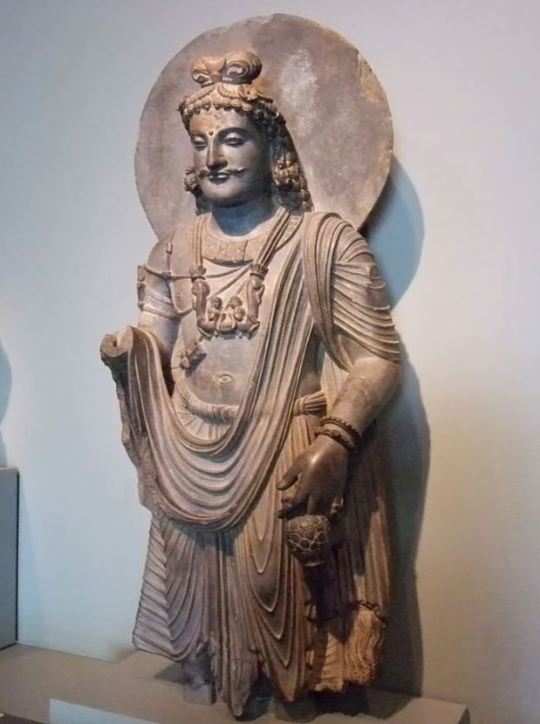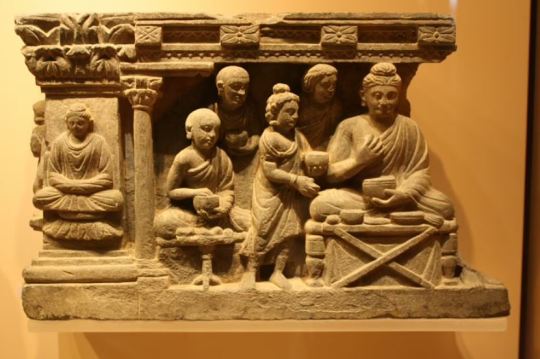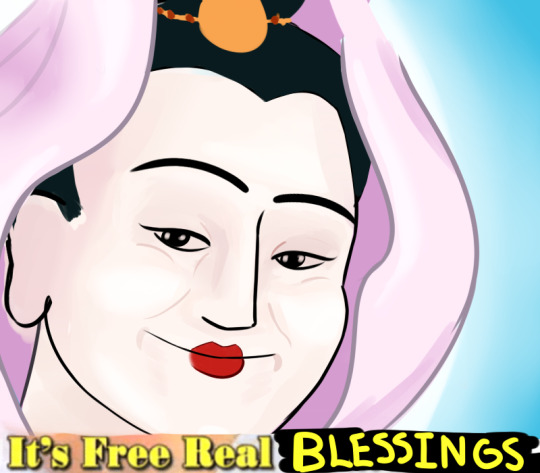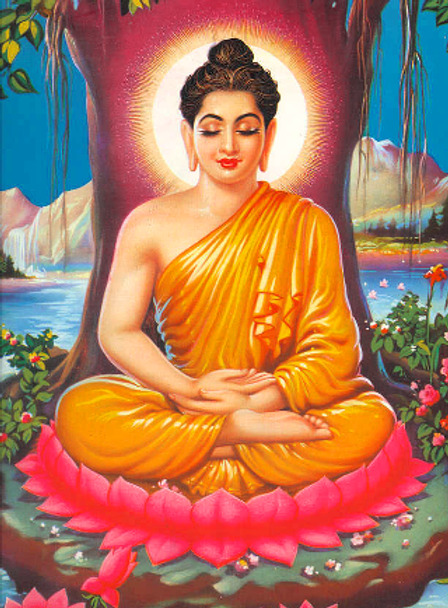#mahayana buddhism
Text
This is a void state post. It's important to note that this void state post of mine Is reflecting a bit of my nondualist persepective on the void state.
If you ever feel drained or overwhelmed throughout your so-called void state journey due to anything that goes under the label of "unwanted", REALIZE/KNOW that "draining" "overwhelming" "anything unwanted" are all empty appearances/illusions. Observe and realize that YOU/GOD are always detached from them, or in truth, there is nothing to detach from at all. Surround your character with love and faith, two of the most powerful forces. Without love and faith, what would genuinely have guided your character to connect with YOU (Pure Consciousness/IAMness (the only reality)? Encourage your character to observe the things they love and is on this so-called journey for, as they Is one with these things, and have unwavering faith in that fact. BE LOVE AND HAVE FAITH, the very forces that have led your character to your essence (IAMNESS). Remember, in every movement/action you do or take, you are actually what we refer to as the void state at all times. BE THE VOID STATE that you truly are.
It Is genuinely OKAY❤️ All Is well❤️ You have already succeeded being a void state master, and you IS success and the void state Itself. Keep In "mind" that love and faith has led the one you're playing as to "get to know about the void state", and "connect with It".
Be at ease knowing that YOU are the void state and power Itself and align with peace, with unwavering love and faith for yourself❤️ It Is so sweet to know that you are here for the best for yourself❤️ (What is best for you aka your hearts' desires are genuinely yours, you, and that Is the only reality, as awareness Is what makes expriences/life exist so be aware of that❤️) There Is comfort In knowing this.❤️
You are strong and keep being strong❤️
98 notes
·
View notes
Text

“When the holy Bodhisattva Avalokitesvara had truly grasped the transcendent wisdom, he realized that visible form is only illusion. The same applies to its perception, to its names and categories, to discriminative intellect and finally even to our consciousness. They are all illusion. With this realizaton he was beyond all sorrow and bitterness.
Disciple Sariputra! The material is not different from the immaterial. The immaterial and the material are in fact one and the same thing. The same applies to perception, concepts, discriminative thinking and consciousness. They are neither existing nor not existing.
Sariputra! All things therefore they are in themselves not good and not bad, they are not increasing and not decreasing.
Therefore one may say there are no such things as form, perception, concepts, thinking process, and consciousness. Our senses such as eye, ear, nose, tongue, body and mind are misleading us to illusion; thus one may also say there is no reality in visible form, sound, smell, taste, touch and mindknowledge. There are also no such things as the realms of sense from sight up to mind, and no such things as the links of existence from ignorance and its end to old age and death and their end. Also the caturāryasatyāni are nonexistent, just as there is no such thing as wisdom and also no gain.
Because the holy Bodhisattva who relies on transcendent wisdom knows that there is no gain, he has no worries and also no fear. Beyond all illusion he has reached the space of highest Nirvana.
All Buddhas of the past, present and future, found highest perfect knowedge because they relied on transcendental wisdom.
Therefore we ought to know that the great verse of the transcendent wisdom is unsurpassed in its splendor, and that it appeases truly all pain. It reads:
GATE, GATE, PARAGATE, PARASAMGATE BODHISVAHA!”
-The Heart Sutra.
#buddhism#buddhist#books#history#literature#religion#theology#mysticism#esotericism#religious#philosophy#sutra#eastern philosophy#mahayana#Mahayana Buddhism#dharma#Dharmic#India#china#Thangka#buddhist art#art#asian art#aesthetic#religious quotes#religious aesthetic#tradition#traditionalism#traditional art
24 notes
·
View notes
Text
For my followers who are curious:
I'm a Mahāyāna Buddhist. I practice mainly Pure Land Buddhism. My Buddha is Amitābha and my Bodhisattva is Guanyin.
Of course, being native Chinese, every now and then, here and there, a little bit of Chinese Esoteric Buddhism, which can be considered as a type and regional version of Vajrayāna (tantric/esoteric Buddhism) does come scattering in, though tantra has never really been a focus in my personal spiritual path.
#religious ramblings#religious people of color#buddhism#mahayana buddhism#chinese buddhist#asian buddhist
24 notes
·
View notes
Text




MAHAYANA Buddhism is the largest Buddhist sect in the world, and its beliefs and practices are what most non-adherents recognize as "Buddhism" in the modern era. It developed as a school of thought sometime after 383 BCE, possibly from the earlier school known as Mahasanghika, though that claim has been challenged.
Mahasanghika ("Great Congregation") was an early Buddhist school that developed after the Second Buddhist Council of 383 BCE when the Sthaviravada school ("Sect of the Elders" or "Teaching of the Elders") broke away from the Buddhist community over doctrinal differences. This early schism led to others and the development of many different Buddhist schools of which Mahasanghika was only one.
Read More Here
51 notes
·
View notes
Video
youtube
Nagarjuna & The Buddhist Middle Way
In this episode, we explore the teachings of the Buddhist philosopher Nagarjuna and his school, known as Madhyamika, or "The Middle Way".
#religion#buddhism#mahayana buddhism#nagarjuna#the middle way#let's talk religion#video#divinum-pacis
34 notes
·
View notes
Text
The 'Heart of Perfect Wisdom', Short Form
A Buddhist Text: The 'Heart of Perfect Wisdom', Short Form, translated by Edward Conze. One of the great Prajnaparamita Texts on Emptiness. #DeepBuddhism #Sunyata.
Homage to the Perfection of Wisdom, the Lovely, the Holy!
Avalokiteshvara, © The Metropolitan Museum of Art
Avalokita, the Holy Lord and Bodhisattva, was moving in the deep course of the wisdom which has gone beyond.
He looked down from on high, he beheld but five heaps, and he saw that in their own-being they were empty.
Here, O Sariputra, form is emptiness, and the very emptiness is form,…

View On WordPress
3 notes
·
View notes
Text
Mahayana Buddhism: An Open Asian Religion
Mahayana Buddhism: An Open Asian Religion
“Guanyin be like”. Drawn by the author.
Recommended Prior Reading:
Contrasting Traditional versus Modern (Western) Views of Magic and Spirit WorkHow Asian Spirituality Differs from Western Occultism
Introduction
For those who want to delve into Asian practices legitimately, it can be very difficult to find genuine information. You have to navigate the heavily appropriated New Age websites,…

View On WordPress
#asian#bodhisattvas#buddha#buddhas#buddhism#decolonizing#east asian#Energy Work#mahayana#mahayana buddhism#metaphysical#occult#south asian#Spirit Work
34 notes
·
View notes
Text
Eliminating all limitations with the help of the passage "not this, not this," one should realize the identity of the individual soul and the supreme self by means of the principal scriptural passages.
AdiShankaracharya
Going Beyond the Beyond
..."This" is "not this"...
The limitations are mere words of this.
From the Prajna Paramita ; As the mantra goes too, from "this", it goes the beyond of going from itself and goes it's beyond state & not beyond state, to "not this".
Gate gate pāragate pārasaṃgate bodhi svāhā
“ Gone, gone, gone beyond, gone utterly beyond, Enlightenment, hail !”
#hinduism#heart sutra#mantra#advaita#buddism#adi shankaracharya#quotes#wisdom#spirituality#diamond sutra#enlightenment#mahayana buddhism
9 notes
·
View notes
Text

Religious Studies Term Of The Day: Bodhisattva
Hey everyone. So today I wanted to talk about Bodhisattvas. To do that, I need to talk about arhatship again. In Theravada Buddhism, the goal of the Buddha’s teachings are to get people to become enlightened, to become arhats, where they no longer feel desire, aversion, or ignorance. However, eventually a tradition comes along in Buddhism claiming to be better than Theravada, the Mahayana Buddhists. These new thinkers thought that individual enlightenment is great and all, but they had a problem with what they saw as the core philosophy. A great illustration I heard in college is that of an apartment building on fire.
Now, imagine that you live in an apartment building and it’s suddenly caught on fire. Most people would want to get out of it. That’s natural. That’s why so many people have religions at all, to escape the suffering of life. The Mahayana Buddhist might go as far as to say that the Theravada Buddhist would try to tell everyone, or at least everyone on the way out, about the fire and make sure they knew to escape but then let them save themselves as they escape as soon as possible. The Mahayana Buddhist would then suggest that a better man would be the person who, after figuring out how to escape, doesn’t do it, but stays inside to ensure that every person can escape, to quite literally save everyone. Heck, with the ideas of samsara in mind, they might actually stick around to save every dog, cat, fish, cockroach, and rat too while they’re at it.
Thus, the idea of the Bodhisattva was born. Sure, find enlightenment, but what you should do is swear to not find nirvana until every living soul finds nirvana first. That’s pretty incredible, not unlike the idea of martyrdom that’s glorified in faiths like Christianity. Thus, Buddhism changed drastically in this denomination. No longer did monks and nuns see themselves as people who sit under trees and meditate, but now they were active in communities, seeing the purpose of their lives as requiring two extra steps on top of the Eightfold Path, trying to do whatever they could for the betterment of all.
Even the idea of reincarnation changed. Now it was not just a system of wanting to go up and not down, or getting it just right at the human level, but an acknowledgment that every reincarnation could land the Bodhisattva anywhere. They could be a monk who has to save a tiger cub from its hungry mother, a wealthy prince who has the power to give anything to anyone, a quail with malformed wings, a warthog who has to deal with the abuse of a monkey, or a monkey who has to deal with the sexual advances of a rock demon, and all are aware of their vows and their purpose. All beings need enlightenment, and so the Bodhisattva goes wherever he is needed. There are so many stories about these figures and I highly recommend finding them out because they are quite cool tales to read and reflect upon.
Anyway, I’d love to learn more about the Bodhisattvas if anyone has more information. I hope that you all are having a good day and staying safe out there.
#religiousstudies#religious studies#religion#religiousliteracy#religions#women and religious traditions#leona m anderson#pamela dicky young#Eva k neumaier#oxford#buddhist wisdom#buddhist teachings#buddhist#buddhism#mahayana buddhism#bodhisattva#enlightenment#buddha#mahayana#Mahayana tradition#factoftheday#fun facts#factsdaily
7 notes
·
View notes
Text
[P.S Sunyata is the sanskrit (buddhist sanskrit word) for the void state/I am state! ❤️]
1. Sunyata (Emptiness) is the profound meaning of the Mahayana Teaching.
Two thousand five hundred years ago, the Buddha was able to realise "emptiness" (s. sunyata). By doing so he freed himself from unsatisfactoriness (s. dukkha). From the standpoint of enlightenment, sunyata is the reality of all worldly existences (s. dharma). It is the realisation of Bodhi — Prajna. From the standpoint of liberation, sunyata is the skilful means that disentangle oneself from defilement and unsatisfactoriness. The realisation of sunyata leads one to no attachment and clinging. It is the skilful means towards enlightenment and also the fruit of enlightenment.
There are two ways for us to understand this concept of sunyata in the Mahayana context. One way is to try to understand the explanation about its true nature. The other way is the realisation through practice. What we are going to discuss now is about its true nature.
Mahayana teachings have always considered that the understanding of sunyata is an attainment which is extremely difficult and extraordinarily profound.
For example, in the Prajna Sutra it says "That which is profound, has sunyata and non-attachment as its significance. No form nor deeds, no rising nor falling, are its implications."
Again in the Dvadasanikaya Sastra (composed by Nagarjuna, translated to Chinese by Kumarajiva A.D. 408) it says: "The greatest wisdom is the so-called sunyata."
This sunyata, no creation, calmness and extinction (s. nirvana) is of a profound significance in the Mahayana teachings. Why do we see it as the most profound teaching? This is because there is no worldly knowledge, be it general studies, science or philosophy, that can lead to the attainment of the state of sunyata. The only path to its realisation is via the supreme wisdom of an impassionate and discriminating mind. It is beyond the common worldly understanding.

🧡🧡🧡
#void state#void success#buddhism#buddhist#buddhist monk#zen quotes#zen buddhist#mahayana buddhism#void motivation#buddha#enlightenment#buddhawisdom
16 notes
·
View notes
Text

“But you cannot recognize a Shambhala warrior by sight, for there is no uniform or insignia, there are no banners. And there are no barricades from which to threaten the enemy, for the Shambhala warriors have no land of their own. Always they move on the terrain of the barbarians themselves.
Now comes the time when great courage is required of the Shambhala warriors, moral and physical courage. For they must go into the very heart of the barbarian power and dismantle the weapons. To remove these weapons, in every sense of the word, they must go into the corridors of power where the decisions are made.”
The Shambhala Warrior Prophecy
#shambhala#the shambhala warrior prophecy#buddhism#Mahayana Buddhism#solar plexus chakra#Aries#Goddess Victoria#Solar Eclipse 2024#music#Spotify
0 notes
Text
Very much in love with my new copy of the Lotus Sutra. And I think I can agree that this one is the English translation to go for. Yay to more study materials!
#religious ramblings#lotus sutra#religious books#sacred texts#mahayana buddhism#buddhist witch#asian witch
15 notes
·
View notes
Text

Nagarjuna, Root Verses on the Middle Way
#nagarjuna#sunyata#Root Verses on the Middle Way#buddhism#mahayana buddhism#emptiness#philosophy#Mūlamadhyamakakārikā#buddha
0 notes
Link
10 notes
·
View notes
Text
Morning meditation — When one is not yet near Nirvana.
Morning meditation — When one is not yet near Nirvana.
https://wp.me/pFy3u-7kp
‘When one is not yet near Nirvana, there are many other paths, but when one is near Nirvana, there is only a single path.’
Suramgama Samadhi Sutra
Lesser Celandine and Dandelion seed.
On our Twitter account, Buddhism Now @Buddhism_Now, most mornings we post a ‘morning meditation’ like the one above.
On the net, of course, it’s morning, afternoon, evening, or nighttime 😀 somewhere.
Click here…

View On WordPress
2 notes
·
View notes
Text
Cult of Avalokitesvara that time forgot
via Sunday Observer, 30 July 2023: Archaeology uncovers role of Avalokitesvara shrines in 7th-10th century trade along Maritime Silk Road in Sri Lanka.
via Sunday Observer, 30 July 2023: Recent archaeological studies on the Avalokitesvara Survey Project in Sri Lanka have revealed the influence of the bodhisattva Avalokitesvara on the region’s 7th-10th century trade networks, with shrines serving as major hubs along the Maritime Silk Road.
The most important discovery was an eighth to tenth-century stone inscription of the Vajradhatu-mandala in…

View On WordPress
0 notes